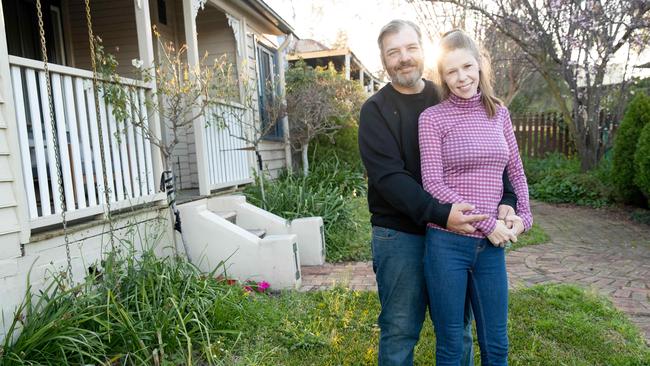Coronavirus: Tree-changers putting down new roots
COVID-19 has propelled a new generation of tree-changers out of the cities to greener and hopefully safer pastures.

COVID-19 has propelled a new generation of tree-changers out of the cities to greener and hopefully safer pastures in a shift that promises to outlast the public health emergency.
For NSW couple Verity Scholes and Michael Boyer, moving from busy Revesby in Sydney’s west to the quiet greenery of Picton on the city’s rural southern outskirts ticked just about every box in these uncertain times: they could live better and, above all, more safely at a distance from the urban hotspots of coronavirus.
“Moving out to this area during these times of COVID puts me at further ease as we aren’t living on top of one another, literally in my case as I was living in an duplex,” said Ms Scholes, a 36-year-old government worker.
Exclusive analysis by demographer Bernard Salt for The Australian shows the local government areas of Wodonga, on the Victorian side of the border neighbouring Albury, Wollondilly in southwest Sydney and Tamworth, in northeast NSW, have proven the most popular in terms of yearly property sales.
Hobart-based Real Estate Institute of Australia president Adrian Kelly said he could feel demand building for acreage in the capital city’s outskirts from mainland buyers. He definitely believes the high inquiry levels are here to stay.
“I have no doubt this is the new normal,” Mr Kelly said. “Once people are allowed to fly again and inspect, it will be game on.”
The City of Wodonga has long been one of Victoria’s top growth regions, with a net annual population increase of 2 per cent. Local mayor Anna Speedie said following the first lockdowns she began receiving a higher than usual number of calls from businesses wanting to move to the town.
Not only would this provide more jobs in the area, Ms Speedie said, it also reflected the new-found flexibility to work from home in regional Australia.
“I think we are going to see a real swing into regional areas as people stuck in flats realise you can get space, affordable housing and great schools outside of the cities,” she said.
REA Group chief economist Nerida Conisbee is less optimistic about the long-term prospects of a permanent shift, arguing that while white collar workers in senior positions may more readily adopt the lifestyle change, anecdotal evidence has found young people are still preferring the traditional workplace.
“What COVID has done is accelerate the trend that was already happening,” Ms Conisbee said. “The long-term trend will ultimately come down to whether people want to work from home.”
Data from realestate.com.au shows areas such as Shepparton in northeast Victoria and Mt Gambier in South Australia, which each showed up in Mr Salt’s top 10 regional locations, also had proven popular with first home buyers based on the online classified site’s search function.
But Local Government NSW president Linda Scott warned the pace of regional movement may put pressure on some localities.
“In areas of NSW where we have seen COVID-19 drive population change, councils in the regions are working to ensure that the essential infrastructure is there,” she said.




To join the conversation, please log in. Don't have an account? Register
Join the conversation, you are commenting as Logout